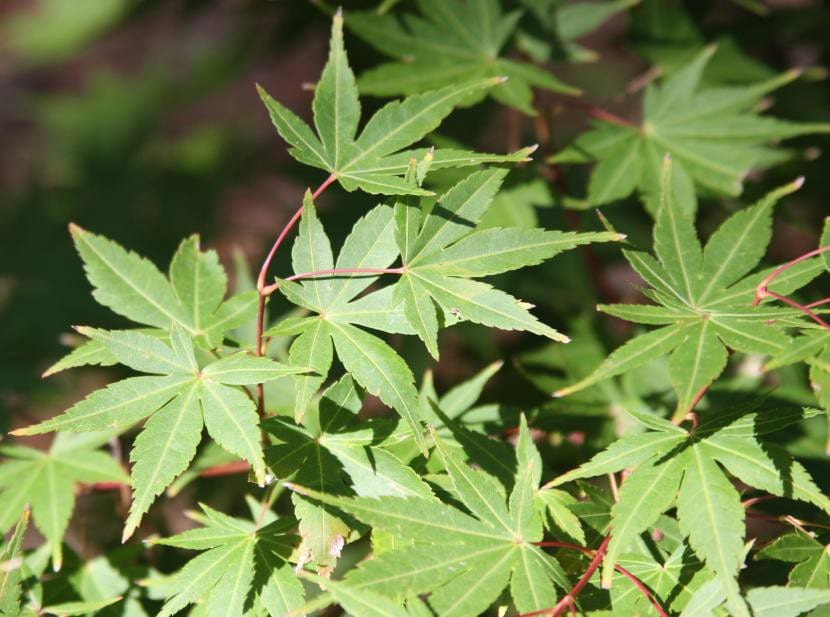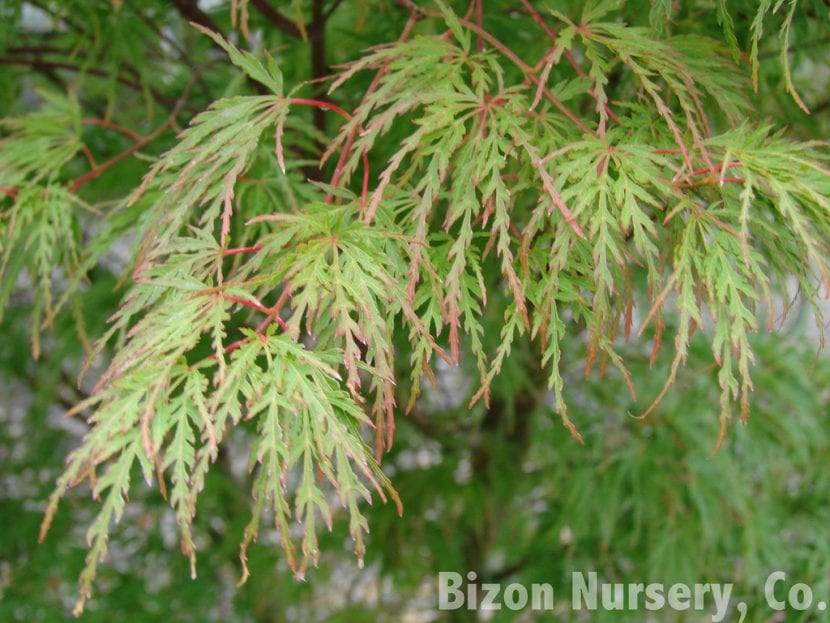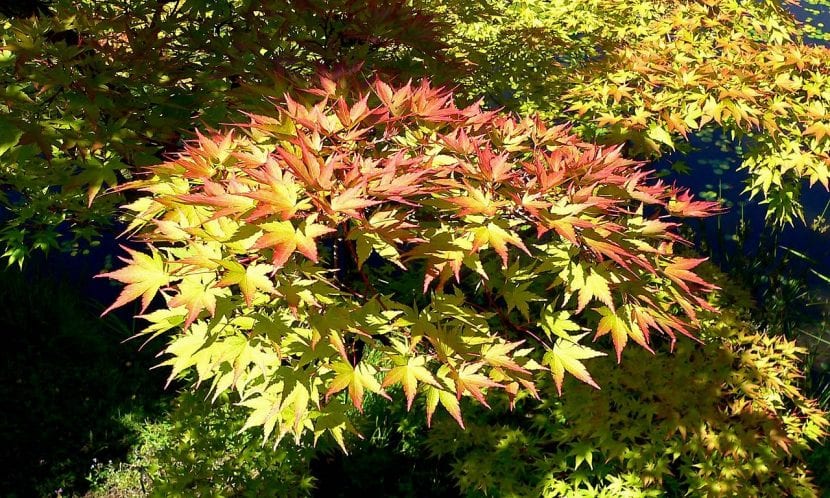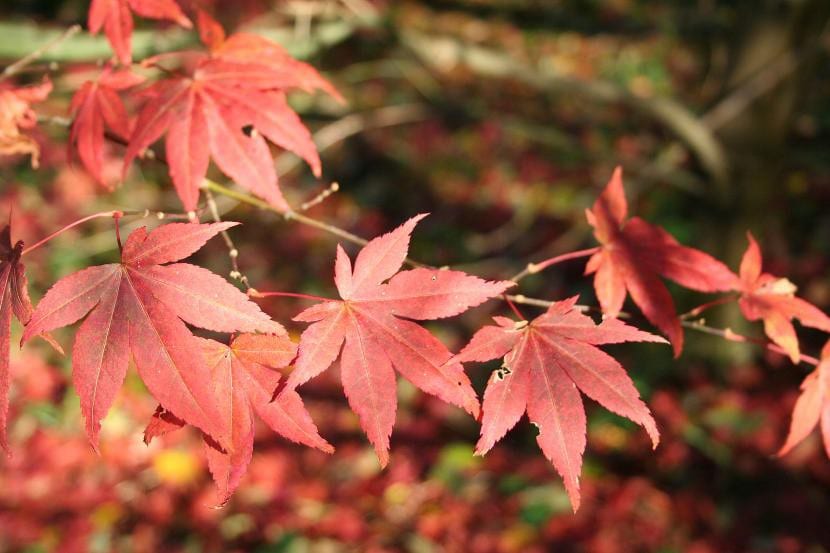
Native to East Asia, Japanese maples are trees that have made millions of people fall in love. The elegance of their leaves, dyed red or orange during autumn, as well as the bearing they acquire as they grow, have made them the plants of the moment.
But which one to choose? There are different varieties of Japanese maples and deciding on one in particular ... is difficult. So much that We are going to tell you the main characteristics of the most recommended, and we will finish with a care guide so that you can have your tree even in warm-temperate climates.
Varieties of Japanese maples
Acer palmatum

This is what is known as the "type species", that is, the one used by botanists as a reference to identify new varieties. It is a tree that grows to reach 16 meters in height, but normally it does not exceed 10m.
The leaves are 4 to 12cm long and wide, and are palmately lobed with 5-7-9 pointed pointed lobes. These turn bright red in fall, and purple-red in spring. During the summer it keeps them green.
Acer palmatum 'Atropurpureum'

It is by far one of the best known and most loved varieties. It has the same characteristics as the previous one, but with the difference that it looks more like a bush than a tree. It does not usually exceed 6m in height, and often branches from the ground.
Its leaves are red during spring and fall, but in summer they turn reddish-green.
Acer palmatum 'Oshio Beni'

This variety is ideal for growing in small gardens, since grows from 3 to 5 meters. Its trunk branches from almost ground level, which provides that oriental touch that we like so much.
Its leaves are very reminiscent of 'Atropurpureum', but this beautiful plant has a brighter red color.
Acer palmatum 'Orange Dream'

The variety 'Orange Dream' is a real beauty. It grows to a maximum height of 3 meters, so can be used to decorate the patio or terrace.
In addition, it is beautiful all year round: in spring its leaves are initially red and then yellow, in summer they are green, and during autumn they acquire a spectacular orange color.
Acer palmatum 'Seiryu'

The 'Seiryu' is wonderful. It grows to a height of five to eight meters, either with the trunk as a tree or branched from the base. It is a little different from what we have seen so far, and it is that the lobes of their leaves are much thinner, and they have a serrated edge, which gives the plant a feathery appearance.
If we talk about their colors, in spring and summer they are green, but in autumn they acquire a very curious intense red.
Acer palmatum 'Shigitatsu-sawa'

This is a tree that, although it is not well known yet, is one of the most recommended if what you are looking for is a plant that, in addition to being beautiful, provides good shade. It can grow to a height of 8 meters.
The leaves are palmate, and turn greenish-yellowish in spring and summer, and during the fall they acquire an astonishing reddish-orange hue.
What care do you need?

Acer palmatum 'Atropurpureum'
Japanese maples are plants that require a series of special care in order to grow well. They are trees and shrubs that attract attention wherever they go, but unfortunately its cultivation is only relatively simple in areas where the climate is similar to that of its place of origin, that is: temperate.
For this reason, you have to take into account a number of things before purchasing one, and they are the following:
- Location: grow well in semi-shade. If they are placed in full sun, their leaves will burn.
- Soil or substrate: it must be acidic (pH 4 to 6), with good drainage. If grown in a Mediterranean or similar climate, it is highly advisable to plant them in pots with 70% akadama + 30% kiryuzuna.
- Irrigation: frequent. During the summer you have to water every 2 days, it may be necessary to water daily; the rest of the year every 4-5 days. You have to use rainwater, or water without lime. You can also add the liquid of half a lemon to 1l of water to acidify it, and use it for watering.
- Subscriber: During spring and summer, it must be paid with fertilizers for acidophilic plants that we will find in the nurseries, following the instructions specified on the packaging.
- Planting / Transplant time: in spring. Pot should be changed every two years.
- Rusticity: it will live well if the temperatures remain between -18ºC and 30ºC. In hot or tropical climates it does not survive, since it needs a cold winter to be able to develop well.
Do you have any Japanese maple?